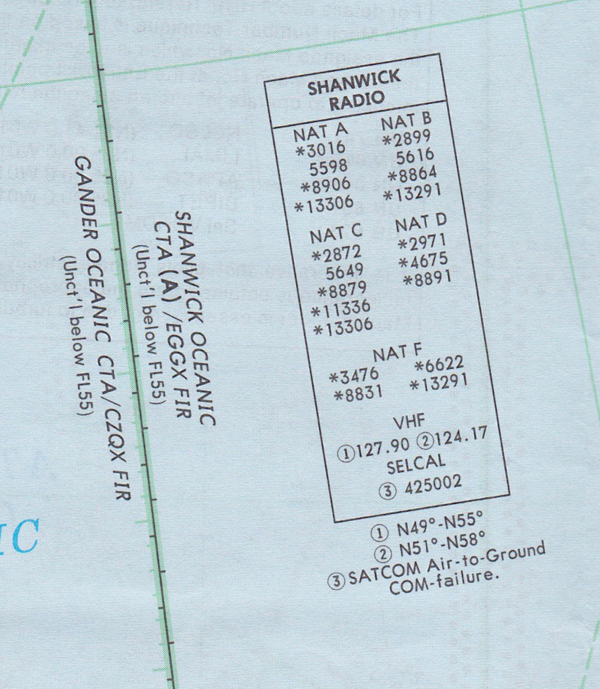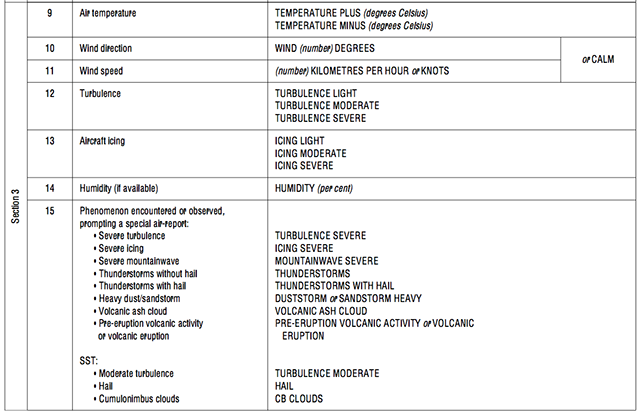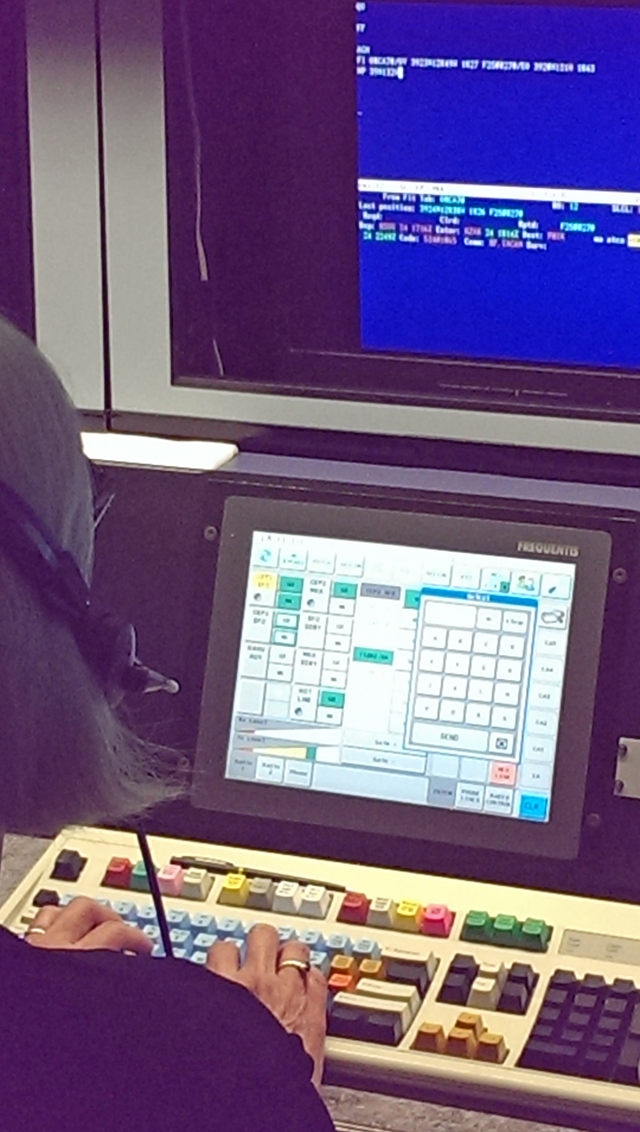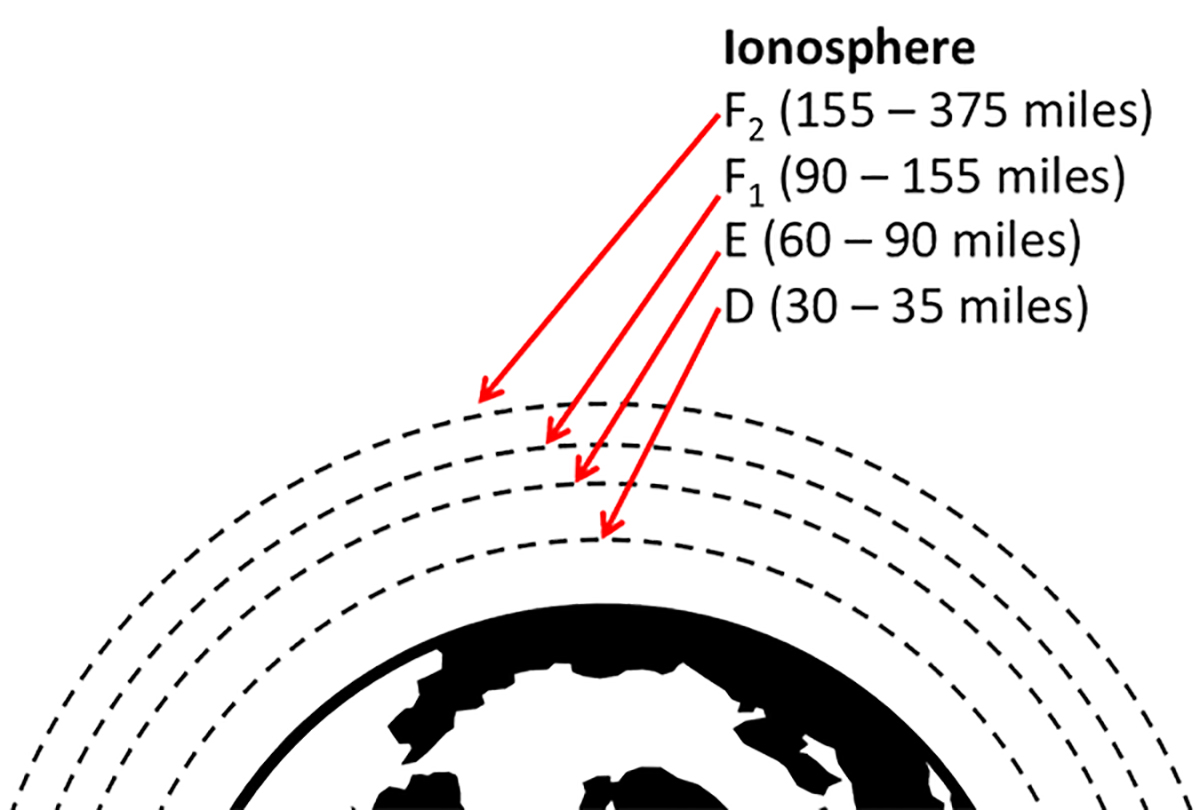A position report will normally be required in oceanic airspace unless instructed to “omit position reports” by the ATS. You can make a CPDLC Position Report or press on here to make a voice report.
— James Albright

Updated:
2019-01-13
There is a certain etiquette to be followed, to be sure. You can survive without it, but the radio operator on the other end and the pilots sharing HF time will appreciate your efforts if your transmissions are brief, clear, and follow the correct format. The radio operator is typing away at a console and is ready to enter the data in a specific order and format. If you deviate from the format, the radio operator has to do a mental translation from poor to proper. If you deviate from the order, the radio operator will have to make liberal use of the TAB and DELETE keys. All of this introduces the possibility of errors.

1
HF issues
Most your position reporting will be made to an ARINC station which is not an ATS entity but a communications relay point. They are passing your position report to ATC and any ATC instructions to you. The radio operator may be monitoring several frequencies so you should always initiate HF radio calls with the frequency. I.e., “Shanwick, Shanwick, Tango November Five One Six Golf Hotel, position on one, one, three, three, four, two.”
HF connectivity can be problematic depending on the aircraft, the weather, and solar sun spot activity. A rule of thumb is: “the higher the sun, the higher the frequency.” Pick higher frequencies in the day and lower at night. More about this: HF.
The best source of frequency information is on the en route chart. Some regions employ “frequency families” that are determined by the aircraft‘s registration, location, and/or route of flight. If the assigned frequency is unusable, selecting another frequency in the same family would be appropriate.
Satellite phones provide another option, though most regions still classify this option as a last resort. (Many international recurrent training vendors say the service providers really don't care, I've not seen evidence to back that up.) The person answering the phone is a radio operator and expects the normal position reporting format.
Note: if the phone number on the chart is six digits long it is for an INMARSAT satellite phone. Your aircraft might be using INMARSAT satellites (most do) but it may not be an INMARSAT phone (many aren't). If you don't have an INMARSAT phone you might not be able to use that six digit number. The G450, for example, does have INMARSAT phones and can use the six digit number. Many of the phone numbers are standard telephone numbers that can be used on any aircraft satellite phones.
Is HF required if you have CPDLC or a good SAT Phone? Yes. More about this: HF.
2
Position report format

Shanwick Radio/SATCOM frequencies, from
Jeppesen Airway Manual, 11 Feb 2011.
Format: Position (Section 1)
The person on the other end of the radio is sitting in front of a computer terminal with a form laid out in the following format. If you give your position report in this order, the radio operator will have an easier time relaying an accurate position the first time. If you skip around, it will slow things down and introduce the chance of error. So use this format.

Model AIREP, Section 1, from ICAO Doc 4444, Appendix A, §1
Section 1 is obligatory, although Items 5 and 6 thereof may be omitted when prescribed in Regional Supplementary Procedures.
- Item 1 — AIRCRAFT IDENTIFICATION. Report the aircraft radiotelephony call sign.
- Item 2 — POSITION. Report position in latitude (degrees as 2 numerics or degrees and minutes as 4 numerics, followed by "North" or "South") and longitude (degrees as 3 numerics or degrees and minutes as 5 numerics, followed by "East" or "West"), or as a significant point identified by a coded designator (2 to 5 characters), or as a significant point followed by magnetic bearing (3 numerics) and distance in nautical miles from the point (e.g. "4620 North 07805 West", "4620 North 07800 West", "4600 North 07800 West", LN ("LIMA NOVEMBER"), "MAY", "HADDY" or "DUB 180 DEGREES 40 MILES"). Precede significant point by "ABEAM", if applicable.
- Item 3 — TIME. Report time in hours and minutes UTC (4 numerics) unless reporting time in minutes past the hour (2 numerics) is prescribed on the basis of regional air navigation agreements. The time reported must be the actual time of the aircraft at the position and not the time of origination or transmission of the report. Time shall always be reported in hours and minutes UTC when making a special air-report.
- Item 4 — FLIGHT LEVEL OR ALTITUDE. Report flight level by 3 numerics (e.g. "FLIGHT LEVEL 310"), when on standard pressure altimeter setting. Report altitude in metres followed by "METRES" or in feet followed by "FEET", when on QNH. Report "CLIMBING" (followed by the level) when climbing, or "DESCENDING" (followed by the level) when descending, to a new level after passing the significant point.
- Item 5 — NEXT POSITION AND ESTIMATED TIME OVER. Report the next reporting point and the estimated time over such reporting point, or report the estimated position that will be reached one hour later, according to the position reporting procedures in force. Use the data conventions specified in Item 2 for position. Report the estimated time over this position. Report time in hours and minutes UTC (4 numerics) unless reporting time in minutes past the hour (2 numerics) as prescribed on the basis of regional air navigation agreements.
- Item 6 — ENSUING SIGNIFICANT POINT. Report the ensuing significant point following the "next position and estimated time over".
Source: ICAO Doc 4444, Appendix A, §1, ¶1.1
Additional Item: Mach Number
When assigned a speed to maintain, the flight crew shall include this speed in their position reports. The assigned speed shall also be advised on first contact with an ATC unit after a frequency change, whether or not a full position report is required.
Source: ICAO Doc 4444, ¶4.11.2.2
The Atlantic documents don't make reference to this and HF radio operators don't expect you to report Mach Number and may even tell you it isn't necessary. The Pacific books don't mention it either but will ask for it if you omit it.
Format: Company data (Section 2)

Model AIREP, Section 2, from ICAO Doc 4444, Appendix A, §1.
Section 2 shall be added, in whole or in part, only when so requested by the operator or its designated representative, or when deemed necessary by the pilot-in- command.
Source: ICAO Doc 4444, Appendix A, §1, ¶1.1
This will not apply to the vast majority of corporate aviation.
Format: Meteorology data (Section 3)

Model AIREP, Section 3, from ICAO Doc 4444, Appendix A, §1.
Section 3 shall be added in accordance with Annex 3 and the Regional Supplementary Procedures, Part 3 — Meteorology.
Source: ICAO Doc 4444, Appendix A, §1, ¶1.1
The requirement for a position report varies with region and is normally specified in the applicable en route chart or state pages. In the North Atlantic, not too long ago, the report was mandatory for aircraft not on the organized track system or upon request. These days, with so many aircraft giving real time CPDLC weather reports, the only time you will need to do this is if, for some reason, they ask you to.
If required, the Met Report is given immediately following the position report. If a mid-point report is also given, the position is given first in terms of a four digit latitude and three digit longitude, such as 4124N 030W.
Example Position Report
| Item | Spoken |
|---|---|
| Aircraft identification | NOVEMBER SEVEN SEVEN ZERO ZERO |
| Position | CHECKS FIVE SEVEN NORTH ZERO THREE ZERO WEST |
| Time (ATA) | AT TWO ONE TWO ZERO ZULU |
| Altitude | FLIGT LEVEL FOUR THREE ZERO |
| Next reporting point | ESTIMATES FIVE SIX NORTH ZERO FOUR ZERO WEST |
| Time (ETA) | AT TWO TWO ZERO FOUR |
| Next significant point | FIVE THREE NORTH ZERO FIVE ZERO WEST NEXT |
| Temperature (at this point) | MINUS FOUR FIVE |
| Wind (at this point) | TWO FOUR ZERO DIAGONAL TWO ONE |
| Midpoint position | FIVE SEVEN ZERO FIVE NORTH ZERO TWO FIVE WEST |
| Temperature (midpoint) | MINUS FOUR EIGHT |
| Wind (midpoint) | TWO FIVE ZERO DIAGONAL TWO FIVE |
| OVER |
About the met report: back in the old days you could tell a pro by the seamless transition between each item, right after the word "Next" would come "minus . . .", it was a thing of beauty. These days, however, nobody is giving weather reports and the radio operator is likely to be just as out of practice receiving met reports as you are giving them.
References
(Source material)
ICAO Doc 4444, Amendment 9 to the PANS-ATM, 15 June 2020
Jeppesen Airway Manual

